Combining Flow Simulation and SOLIDWORKS Simulation Premium - The Duckbill Valve
I am always looking for new and exciting ways to combine our great products to make something even better. In my line of work, one of the best combos is the unique marriage between the powerful FEA capabilities of SOLIDWORKS Simulation and the great CFD performance of SOLIDWORKS Flow Simulation. Together they allow a one-way CFD to FEA fluid-solid-interaction (or FSI). But does it stop there?
I found a great example the other day that sparked my interest; the duckbill valve. It is a simple piece of rubber or plastic that is meant to open when the pressure behind it is more than the pressure in front of it. So we are going to leverage SOLIDWORKS Flow Simulation and SOLIDWORKS Simulation Premium to simulate how much this duckbill opens under 3 atmospheres of pressure! Let’s take a look.
The design of the model is simple. I modeled half of the valve with a split face that will represent where the valve will open, then I mirrored the body (without merging the solids.)
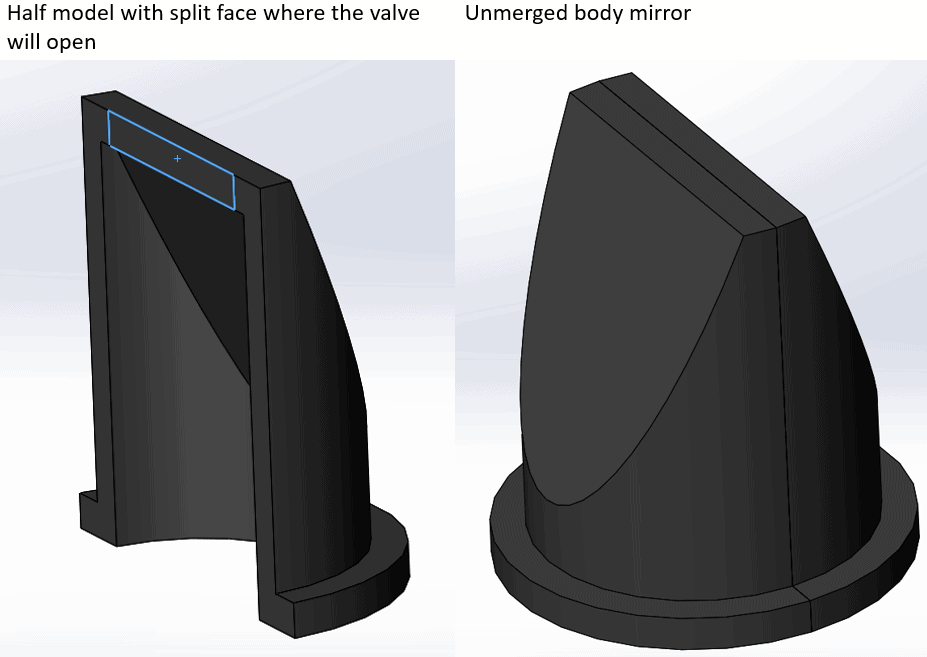
We will start with SOLIDWORKS Flow Simulation. The setup is simple. We have a pipe with a duckbill valve dividing the two domains. One domain is set to 3 atmospheres (~303975 Pa) of water pressure and the other is set at standard atmosphere temperature pressure, both with simple pressure boundary conditions. Here you can see the setup and results.

From here, we can go to export these Flow Simulation results via Tools > Flow Simulation > Tools > Export Results to Simulation.

Once that is done, we can do the FEA setup. Due to the rubber material, we will choose to do a Non-linear study. I used a 60 Durometer rubber material with Mooney-Rivlin material curves obtained from the materiality web portal. As a bonus to SOLIDWORKS Simulation Premium & Professional, free access to the portal is included! The Flow Simulation lids can be excluded from the FEA analysis, and the pipe is set to be treated as a rigid body. The global bonded contact should be sufficient to keep the duckbill valve seated in the fixed pipe, but we will need to add a local “No penetration” contact set on the faces that represent the part of the valve that separates under pressure.
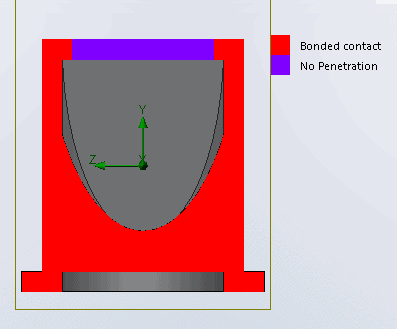
Finally, we can import the Fluid Pressure effects from SOLIDWORKS Flow Simulation. Under the study properties, we can enter the flow/thermal effects tab and check the box to “Include Pressures from SOLIDWORKS Flow Simulation.” It will prompt you to select the corresponding .FLD file for the flow study you wish to import.
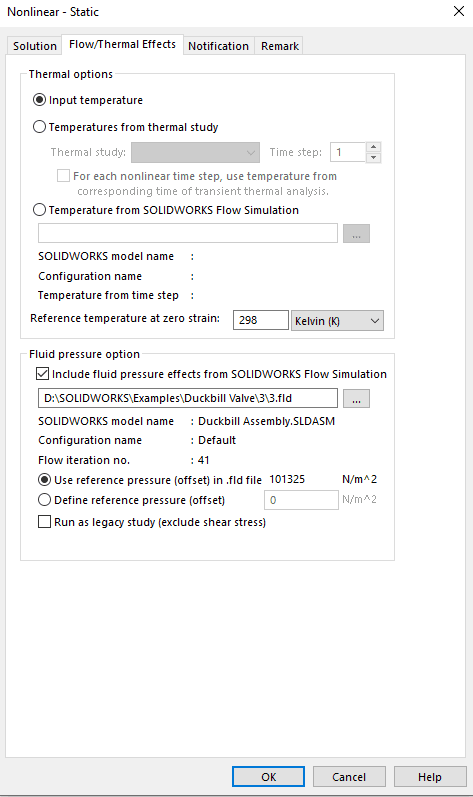
From there, the pressure profiles will be imported. They can be viewed once the mesh is created by right-clicking the “Fluid Pressures” under the external loads folder and selecting “show.”
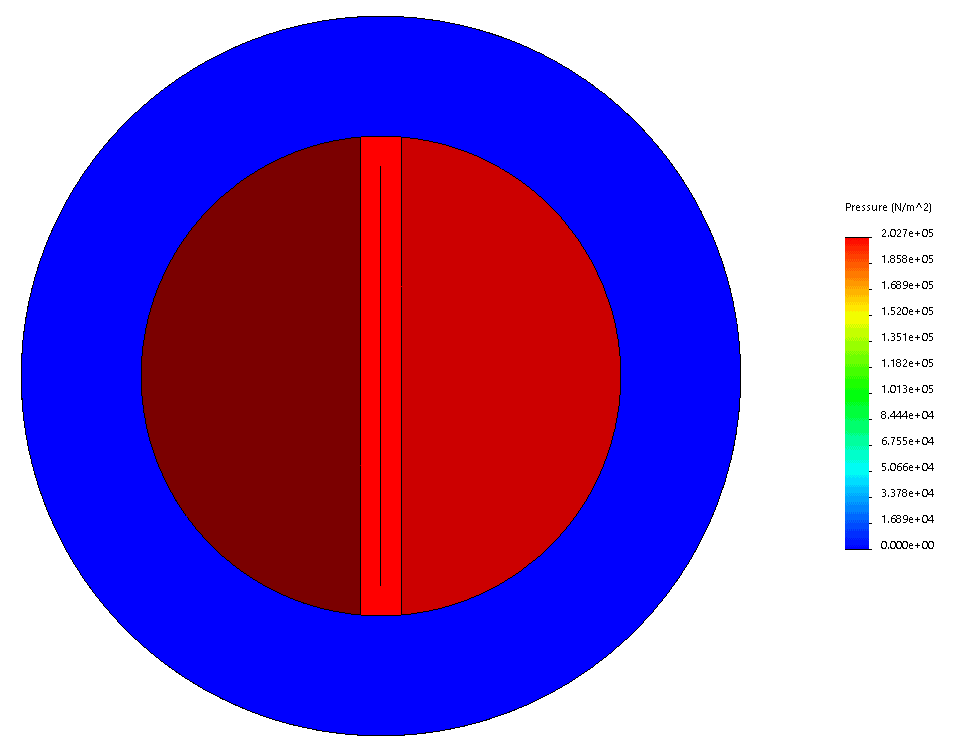
This is looking up through the inside of the valve. You can see the high relative pressure on the inside, and the zero relative pressure on the outside. So, this looks exactly how we would expect. After running the analysis, we can view how pressurizing the valve would cause it to open.

But that’s not all. We can save the deformed shape of the valve to a new configuration in the model. (Right-click the results folder, export deformed shape).
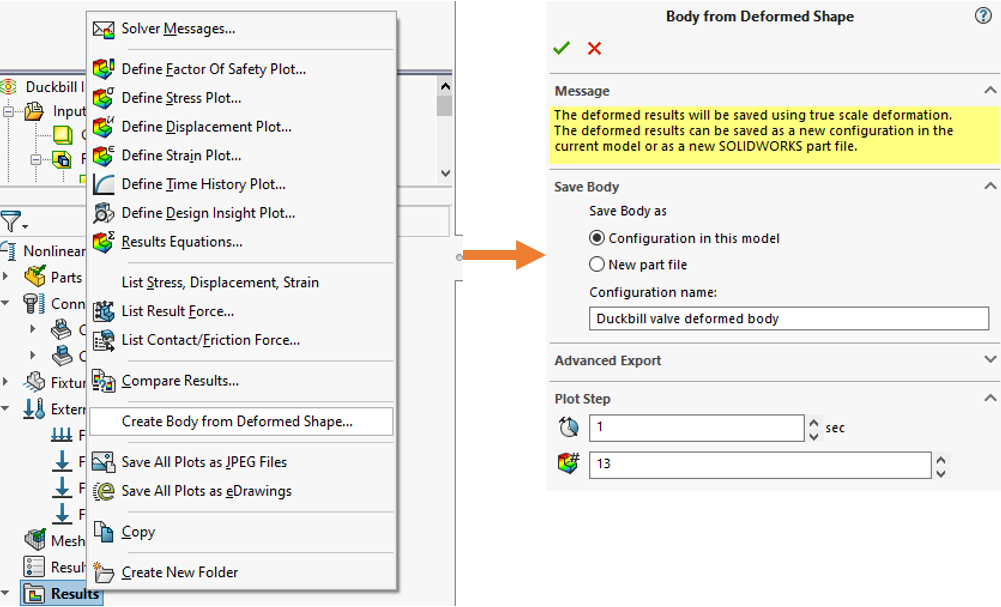
Leveraging this, we can re-analyze the valve in flow simulation with its opened state to see how the flow will proceed through the lower pressurized domain that is now open.

Admittedly, this is not a true bi-directional fluid-solid-interaction (FSI) problem, but in many cases, that level of fidelity is not necessary. So, with SOLIDWORKS Flow Simulation and SOLIDWORKS Simulation, we can save you a bunch of time (and not to mention money) on these types of problems.
Thanks for taking the time to read about the ways we can couple the powerful products offered by the SOLIDWORKS Simulation product suite and leverage them to solve complex problems like this. I hope this blog has inspired you to take your designs to the next level!
Thanks for reading,
Matt Sherak
Simulation Product Specialist
Computer Aided Technology, LLC

 Blog
Blog